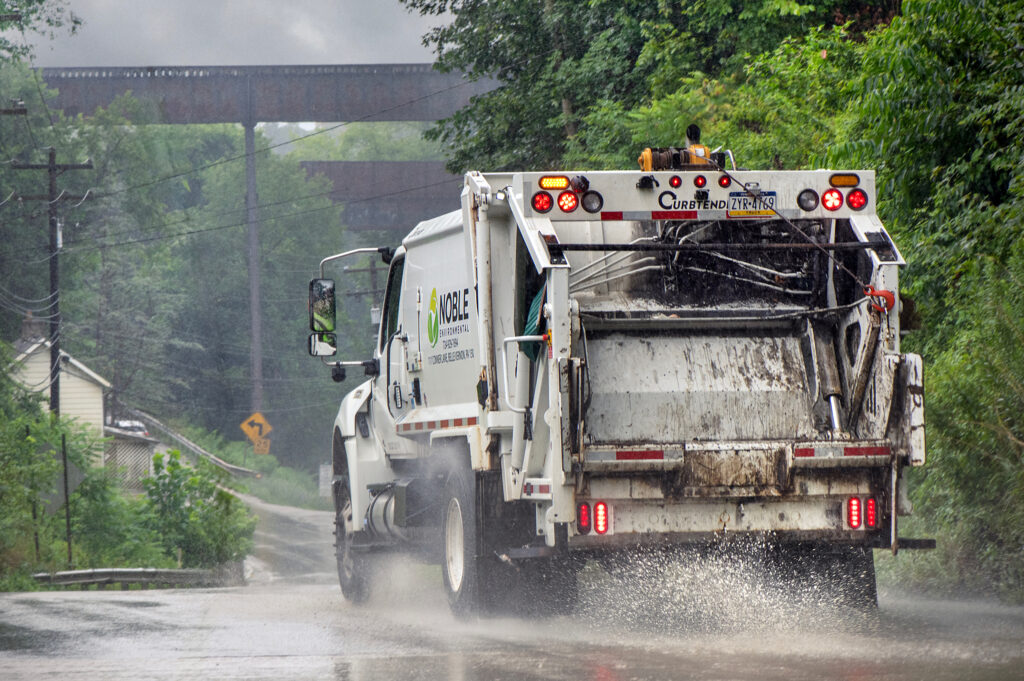There was a time when the air pollution in Charlotte, North Carolina, was so bad that the 871-foot Bank of America Corporate Center, the city’s tallest building, topped by an ornate metal crown, wore a veil of smog.
It took years, but after North Carolina enacted more stringent regulations, the air in Charlotte, although far from pristine, has finally improved.
That hard-won accomplishment is now threatened by the Environmental Protection Agency’s proposal to repeal regulations for greenhouse gas emissions, the primary drivers of global climate change.
In July, EPA Administrator Lee Zeldin announced the agency’s intention to rescind the 2009 determination, known as the endangerment finding, that greenhouse gas emissions, like carbon dioxide and methane, harm human health and the environment. Although the EPA’s repeal would be limited to greenhouse gas regulations, it would have the effect of automatically eliminating many other emissions standards for cars and trucks.
An analysis by the N.C. Department of Environmental Quality shows that levels of criteria air pollutants from vehicles would also significantly increase in Mecklenburg County. The EPA defines criteria pollutants as ozone, lead, carbon monoxide, sulfur dioxide, nitrogen dioxide and very fine particulate matter, known as PM 2.5, which is smaller than the width of a human hair and can enter not just the lungs but also the bloodstream.
Even marginal upticks in criteria pollution could harm the county and its residents because it has little leeway in complying with air quality standards.
Mike Abraczinskas, director of the N.C. Division of Air Quality, told the Environmental Management Commission earlier this month that a state analysis showed if greenhouse gas standards for cars and trucks are eliminated, on-road emissions of four pollutants—nitrogen oxide, PM 2.5, sulfur dioxide and volatile organic compounds—in Mecklenburg County would increase by a total of 470 tons by 2035.
By 2050, annual emissions would increase by 940 tons.
The division chose Mecklenburg County for its analysis because the area is close to exceeding federal standards on ozone and PM 2.5, the latter of which is scientifically linked to heart and respiratory illness, premature birth and dementia.
“These challenges could hinder the state’s ability to maintain compliance with health-based National Ambient Air Quality Standards while supporting economic development,” Abraczinskas said.
The EPA asserted in its proposal that repealing greenhouse gas emission regulations would not change existing standards for criteria pollutants. However, the EPA acknowledged in its proposal that the repeal “could marginally impact emissions of criteria pollutants and air toxics,” but it would not have a “material adverse impact on the health of individuals with respect to non-GHG air pollutants, including on children.
Asked for further detail on the impacts of repealing the endangerment finding, an EPA spokesperson said: “Clearly you have not looked at our website. We refer you to our website where you can find the proposed rule, the draft regulatory impact analysis, and many more resources on the proposed rule.”
DEQ sent a 28-page letter to the EPA during the public comment period in September on repeal of the endangerment finding, urging the agency to withdraw the repeal. DEQ cited the state’s vulnerability to hurricanes and wildfires, which are becoming more intense because of climate change. The rollbacks would also undermine some of North Carolina’s work to achieve cleaner air.
“We are very concerned that the EPA’s proposed action will have serious impacts on North Carolina’s plans for reducing greenhouse gas emissions and maintaining compliance with national ambient air quality standards,” Abraczinskas wrote.
The EPA’s timing is particularly egregious, said Jeffrey Robbins, executive director of the nonprofit group CleanAIRE NC, based in Charlotte.
Mecklenburg County plans to widen Interstate 77, the primary north-south artery through Charlotte. This would “funnel more heavy vehicle traffic directly through historically Black neighborhoods,” Robbins said. “Families in these communities will breathe this exhaust every day—in their homes, in their schools, in their places of work. Removing emissions safeguards precisely when traffic volume is increasing is an unacceptable act of environmental injustice.”
Aided by a rainy June and July, Mecklenburg County recorded zero days of exceeding the federal ozone standard this year, according to a presentation on Monday by the county’s Air Quality Commission.
But with an average of 68 parts per billion, the county remained just under the wire to comply with health-based standards for ozone of 70 parts per billion, as measured over the last three years.
Megan Green, the county’s program manager for mobile sources—cars and trucks—told the Air Quality Commission that if the EPA successfully repeals the standards, local and state governments would have to “look for other emission reduction strategies that would bring us into compliance.”
Individuals, too, could reduce their exposure to pollutants, according to Robbins of CleanAIRE NC, by combining separate errands into a single trip, using public transit, and walking or biking for short trips. Turn off the car, for example, while idling in a drive-thru or in a school pickup line.
“We cannot afford to gamble with the health and well-being of our families and communities by ending standards that have so effectively reduced dangerous pollution,” Robbins said.
The EPA has not set a date for the repeal, and first must review all 27,000 public comments it received on the proposal.
About This Story
Perhaps you noticed: This story, like all the news we publish, is free to read. That’s because Inside Climate News is a 501c3 nonprofit organization. We do not charge a subscription fee, lock our news behind a paywall, or clutter our website with ads. We make our news on climate and the environment freely available to you and anyone who wants it.
That’s not all. We also share our news for free with scores of other media organizations around the country. Many of them can’t afford to do environmental journalism of their own. We’ve built bureaus from coast to coast to report local stories, collaborate with local newsrooms and co-publish articles so that this vital work is shared as widely as possible.
Two of us launched ICN in 2007. Six years later we earned a Pulitzer Prize for National Reporting, and now we run the oldest and largest dedicated climate newsroom in the nation. We tell the story in all its complexity. We hold polluters accountable. We expose environmental injustice. We debunk misinformation. We scrutinize solutions and inspire action.
Donations from readers like you fund every aspect of what we do. If you don’t already, will you support our ongoing work, our reporting on the biggest crisis facing our planet, and help us reach even more readers in more places?
Please take a moment to make a tax-deductible donation. Every one of them makes a difference.
Thank you,

















